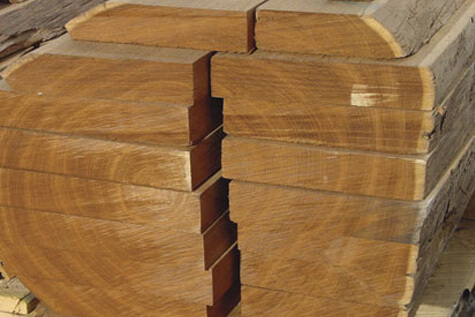Teak (proper name Tectona Grandis) is one of the most sought after timbers in the world today. It is not from the rainforests as is commonly thought. Used in the creation of most of the Super Yachts. Cladding of certain buildings. The older boats had their hulls made of teak and of major interest to us is that it is simply fantastic for use in garden furniture.
Teak is wonderfully stable, it does not readily warp or crack. Is resistant to water, its natural oils and minerals actually protect metal – especially screws and nails when used in various projects.
It’s even grain and mellow brown colour is aesthetically pleasing to both the eye and touch. Teak like all hardwoods if left outside will turn in to the beautiful silvery grey that most of us love.
In terms of longevity teak from buildings in the Far East has been dated at over 2000 years and we in turn (when available) use recycled teak for our garden furniture. The oldest we can trace has been in excess of 700 years.
Another wonderful attribute of teak is as mentioned above its ability to remain totally useable when immersed in water. We have managed to obtain some from the wreck of a merchantman SS PEGU torpedoed in 1917 by U147 off Southern Ireland bound for Liverpool with teak baulks given to Britain by the Burmese Government for use in gun emplacements. Salvaged in 1998 once cleaned this teak was as good as new. We have created some magnificent furniture from it including a 4 – 6 seater Compass Table still showing some of the concretion 70 years beneath the waves has provided. Ask for pictures if interested.
A mature Teak tree stands over 130 feet tall and has an enormous girth. In Burma (now Myanmar) trees were selected then ringed (to cut off the sap supply) and the tree then left for a few years before felling. As the trees are growing in normal forests, not unlike our mighty oak trees. More often than not Elephants were the only way of getting them out without causing damage to the young saplings around them. Nature then every monsoon floated the trees down eventually to the massive rivers. This process could take up to 12 years.
Massive floating rafts of logs were tied together and the family in charge actually lived on the rafts as they floated down to the sawmills and the ports. These now virtually redundant methods have like most things given way to modern technology.
Worldwide demand for teak has pushed the price sky high but when you consider the benefits (resistance to rot, insect attack and not applicable to us – Termites!!) You can appreciate just why this wonderful timber has earned its reputation as the must have timber. Some of our garden furniture is already over 80 years old and still going strong.
How did Teak come to be used in garden furniture? Well after the great war when they began to break up the mighty battleships and cruisers the decking which was thick and very usable created a what to do with this problem? Someone hit on the idea of garden benches and away we go. Ever since, whilst Oak, Iroko, Sweet Chestnut and Beech plus a few other hardwoods – put simply teak is the gold standard.
Reverting to ships of the line and the great sea battles, Trafalgar, The Armada and of course the Dutch East India Company whose ships were constantly under attack from pirates. In these ship to ship close encounters far more seaman were killed by flying shards of Oak than anything else as a cannon ball hitting the deck exploded outwards send the lethal oak splints in all directions cutting down men everywhere. Once someone discovered that teak far from exploding outwards actually retained the impact loss of life from flying splinters was drastically reduced – this is why the big navy ships virtually all had thick teak decks. Maintenance required only a good scrubbing down with salt water to keep the teak in pristine condition and this is still true if you live by the sea.
